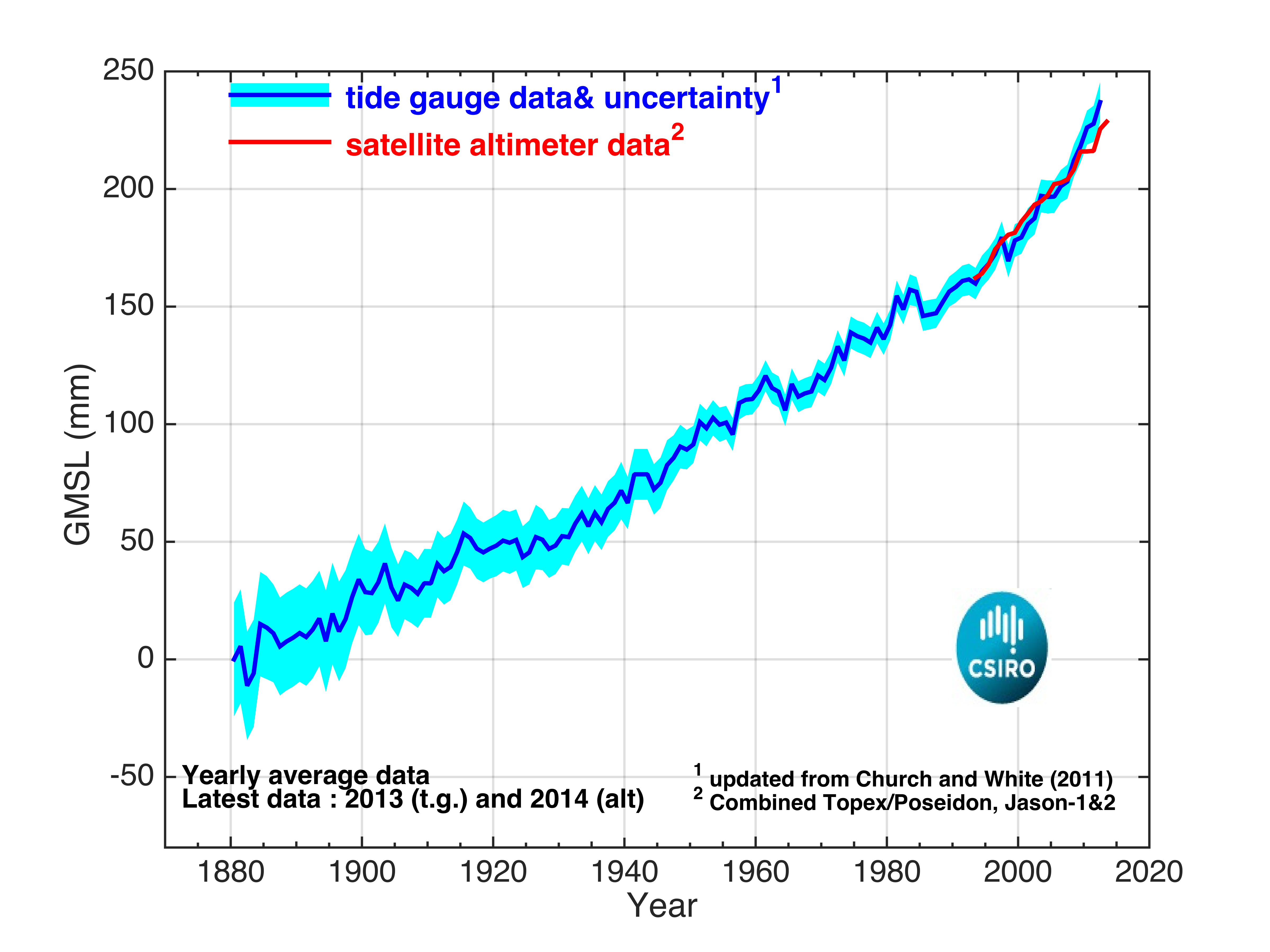Sea Level
Understanding the past – Improving projections for the future
The Oceans are changing. Many observations show that the ocean has been changing over the last several decades. About 93% of the excess heat produced by greenhouse gases has been absorbed by the oceans. This results in an increase of ocean volume through thermal expansion. There has also been addition of water from glaciers and ice sheets, and changes in storage of water on or in the land (e.g. retention of water in man-made dams and extraction of water from aquifers). Together these result in changes in sea level.
Sea-level rise is a response to increasing concentrations of greenhouse gases in the atmosphere and the consequent changes in the global climate. Sea-level rise contributes to coastal erosion and inundation of low-lying coastal regions, particularly during extreme sea level events. It also leads to saltwater intrusion into aquifers, deltas and estuaries. These changes impact on coastal ecosystems, water resources, and human settlements and activities. Regions at most risk include heavily populated deltaic regions, small islands (especially coral atolls), and sandy coasts backed by major coastal developments.
This area contains
Global Mean Sea Level (GMSL) – 1880 to the end of 2014
Our most recent estimate of changes in global averaged sea level since 1993 are estimated from satellite altimeter data (red) and, since 1880, by combining in-situ sea level data from coastal tide gauges and the spatial patterns of variability determined from satellite altimeter data (blue).
Note that error bars have not been shown for the altimeter data (red curve) for clarity, but are about ±5 mm.
Note that the number of gauges going in to the estimate drops off for the last couple of years because of delays getting the most recent data into the PSMSL archive, which is where we get this data from. This is simply due to the the time it takes the various national archives to compile and submit the data.
click here to download a print-quality pdf of this figure.
Benoit Legresy, last modified 22/09/2014.

